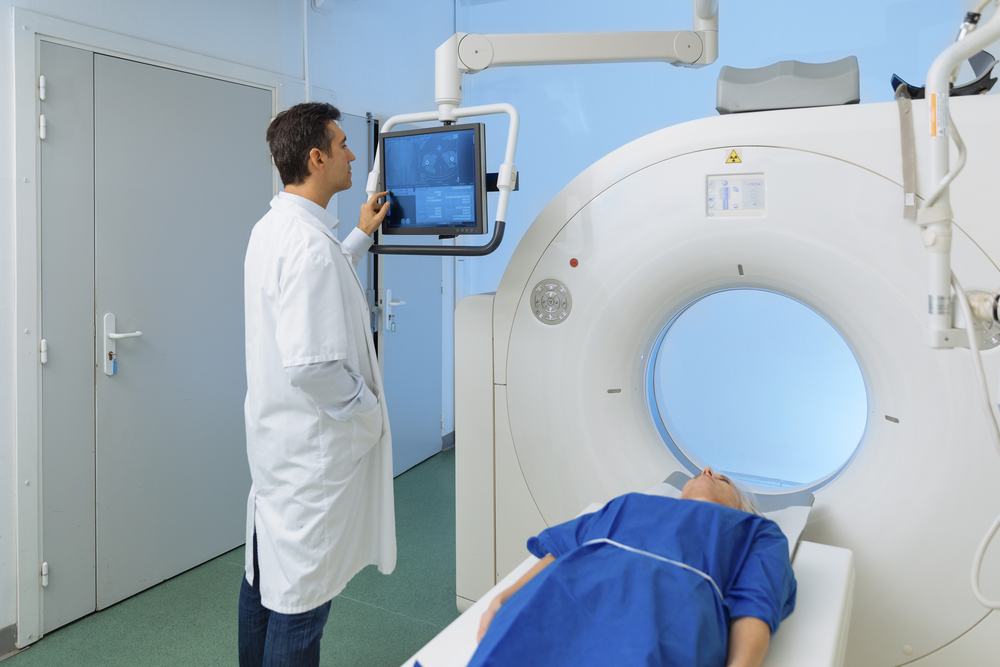Non-contrast MRI Effective in Monitoring Progression of MS, Study Shows
Written by |

The evaluation of disease progression in multiple sclerosis (MS) patients through magnetic resonance imaging (MRI) can be performed without the use of a contrast agent, new research has shown.
These findings suggest that routine use of contrast-enhanced MRI is unnecessary for most follow-ups with MS patients, reducing both imaging time and cost without missing new or enlarged lesions.
The research article, “Accuracy of Unenhanced MRI in the Detection of New Brain Lesions in Multiple Sclerosis,” was published in the journal Radiology.
MRI with the administration of a contrast agent is generally considered a requirement for follow-up scans in MS patients.
Typically, the contrast agent used is gadolinium — a heavy metal that enhances the MRI result, helping provide diagnostic data. However, the use of gadolinium contributes to longer MRI scan times and increased costs. Also, there is some evidence that not all gadolinium leaves the body after administration, though its long-term health impact is unclear.
Now, MRI with higher magnetic field strengths — such as 3 Tesla MRI (Tesla is the unit for magnetic field strength) — have become widely available, especially for brain imaging. Also, recently introduced three-dimensional MRI outperforms conventional two-dimensional MRI in visualizing lesions. Improvements in MRI technology, as well as scanning methods, have also improved the sensitivity in detecting new or enlarged lesions in MS at follow-ups.
Join our MS forums: an online community especially for patients with Multiple Sclerosis.
Researchers from the Technical University of Munich, Germany, tested whether using contrast material influences the detection of new or enlarged MS lesions, critical for the assessment of interval disease progression — defined as at least one new or enlarged lesion on follow-up MRI scans.
“These factors warrant evaluation of strategies for reducing or omitting contrast agent, especially in MS patients who often accumulate a high number of MRI scans over their lifetimes,” Benedikt Wiestler, MD, the study’s senior author, said in a press release.
The retrospective study looked at 507 follow-up MRI scans, acquired from 359 MS patients, to assess new or enlarged lesions. Participants had an average age of 38.2 years.
Of the 507 scans, 264 showed disease progression in the form of 1,992 new or enlarged lesions.
“In over 500 follow-up scans, we missed only four of 1,992 new or enlarged lesions,” Wiestler said. “Importantly, we did not miss disease activity in the non-enhanced scans in a single follow-up scan.”
The researchers then tested whether two different imaging methods (image subtraction methods) picked up on MS lesions specific to contrast or non-contrast enhanced MRI. With either method, contrast-enhanced MRI did not reveal interval disease progression that was missed in readouts of the non-enhanced scans.
“In conclusion, our data support the view that modern three-dimensional sequences at 3.0 Tesla in combination with image subtraction are ready to supersede routine use of contrast material in most instances of follow-up investigations of patients with MS, reducing both imaging time and cost without missing new or enlarged lesions,” the researchers said.
It is important to note that, though non-enhanced MRI appears adequate to reliably assess interval disease progression, contrast enhancement with gadolinium reveals information on lesion age. This data can help identify active demyelination of nerve fibers, and obtain an accurate differential diagnosis that cannot be determined in non-enhanced MRI scans.
Nevertheless, the study showed that the combination of three-dimensional MRI and subtraction image methods can improve the sensitivity for detecting new MS lesions.
“Several vendors have made tools for generating subtraction images commercially available,” Wiestler said. “Implementing such tools into the routine clinical workflow will help to make the use of contrast agent dispensable in routine follow-up imaging of MS patients.”





